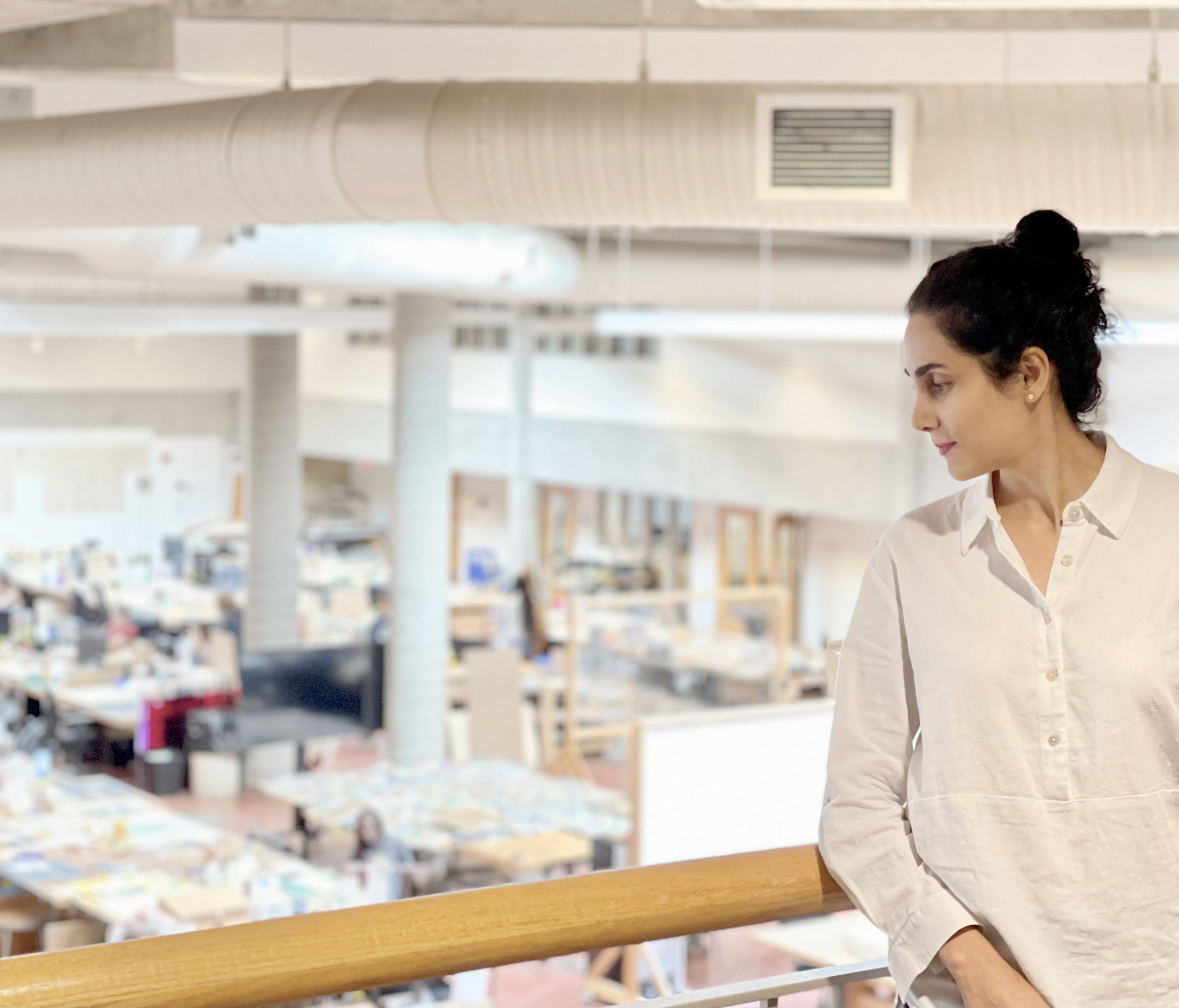
By Sara Saghafi Moghaddam, Ph.D. candidate at Virginia Tech
I am a practicing architect and researcher pursuing my doctoral studies in Architecture and Design Research at Virginia Tech. I explore topics at the intersection of architectural design and extended reality with a focus on well-being. My Ph.D. research is on incorporating virtual reality in the initial phase of the design process. I use 3D scanning of the project site, simulation, and virtual reality to develop a process that helps architects make more informed design decisions. I hold a BArch from the University of Tehran, an MArch from Milan Polytechnic University (Polimi), and an MS in Computational Design from Georgia Tech.
As the daughter of two academics, I grew up in a family where education was pervasive. I was privileged to attend some of the best universities, which opened a world of opportunities for me. My grandfather, who traveled to study abroad in his time, founded a library in one of the deprived areas in the harshest desert regions in Iran, in an area where no one had access to or was concerned about knowledge progress. The library, in the heart of the desert, still exists and has developed after almost a century. I have had the chance to witness resilience, and academic mindset since I was a kid.
I finished my undergraduate studies in the Middle East, with a rich history. I had the opportunity to observe architectural history unfold before my eyes. I was intrigued by the diversity and sophistication of the architectural methods and techniques designed and employed throughout history. The urban structure and design, bazaars as the city’s main constructs and unifying elements, courtyards, wind catchers, and windmills, as various building performance systems exposed me to design solutions that employ and integrate different disciplines to address a design problem.

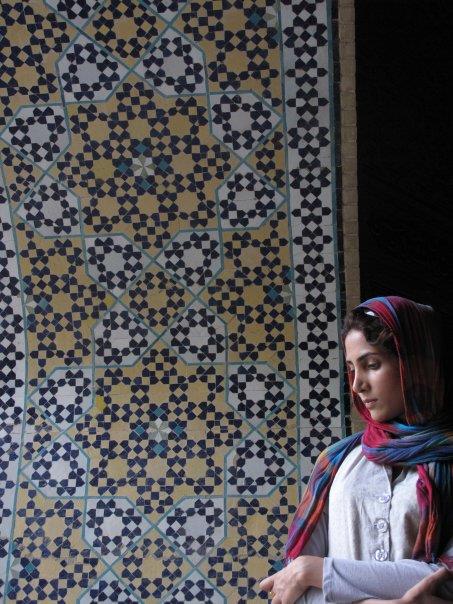
After finishing my undergraduate degree in Iran, I moved to Italy to pursue my master’s degree in Milan. I was surrounded by design events and exhibitions such as the Venice Biennale on architecture and design and Milan Design Week. I got the opportunity to travel throughout Europe, visit the historical and contemporary architecture and, most importantly, interact with people from diverse cultural backgrounds. I learned a lot from those encounters, thoughts, and points of view. Learning the languages also opened up new perspectives on understanding the world, enriching my world of meaning.
A great medium of thinking and communication is literature. I have always enjoyed reading Persian poems, especially Rumi’s, Hafez and Saadi’s. Each new language is an extension of cognition and understanding.
While studying in Europe, I collaborated on drawings for two books by Farshid Mousavi, “The Function of Form” and “The Function of Style,” which were also exhibited at the Venice Biennale as an installation in Arsenale [1–3]. Meanwhile, Meanwhile, I also assisted my advisor, Andrea Rolando, in teaching architecture and urban design studio classes at Polimi. For our thesis, my colleague and I studied how the landscape and urban fabric transition from Milan to Turin, and we identified the natural, artificial, and industrialized influential factors [4].
My takeaway from my time in Milan was to see the design in the big picture, whether in terms of its impact on the urban area or people with different interests. Architecture can be a reference point in time and place, mainly the socio-temporal aspect of architecture.
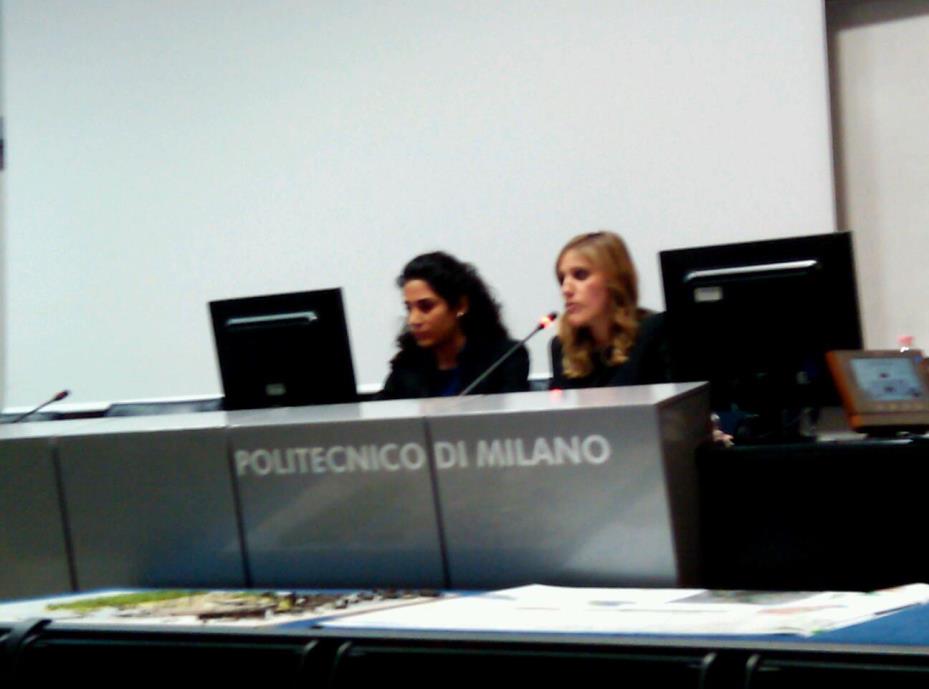
Since my academic architecture studies began, I have worked on architectural projects of various sizes, including residential, office, commercial, and landscaping. I practiced and learned how different interests and perspectives could work together. These experiences made me realize my interest in knowledge and theories could lead to a solid foundation for creation. The role of architects and designers and the design thinking process seem to evolve because of technological advances, automation, and the way economic power is distributed. Parallel to such advancement it is crucial to consider new methods for architectural offices management, improve work conditions and salaries specially with the growth of tech- related fields.
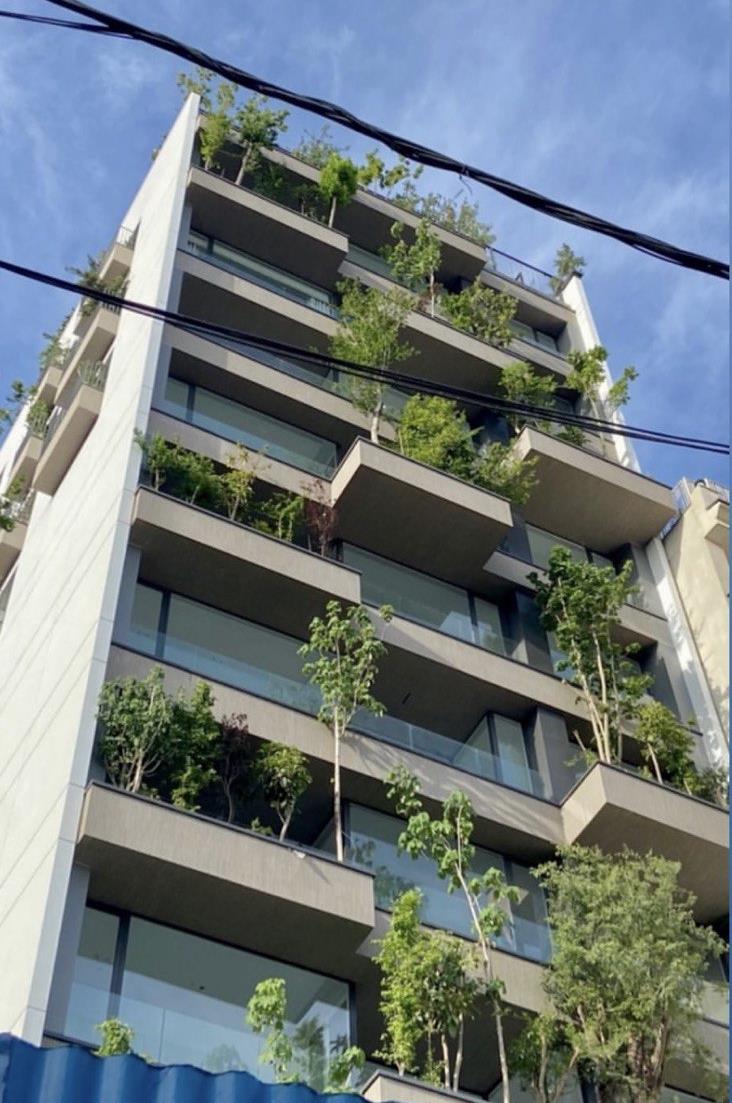

After years of professional experience, I came to the US to pursue my studies. I attended Georgia Tech to study computational design and explore the potentials that technology might offer to the design and fabrication process. I collaborated as a team member to develop CAD tools for the design process, fabrication, and design analysis and assessment. We published and presented our work at the International Journal of Space Structure, EDRA and Sigradi Conferences, and the International Journal of Architectural Computing [5–7].
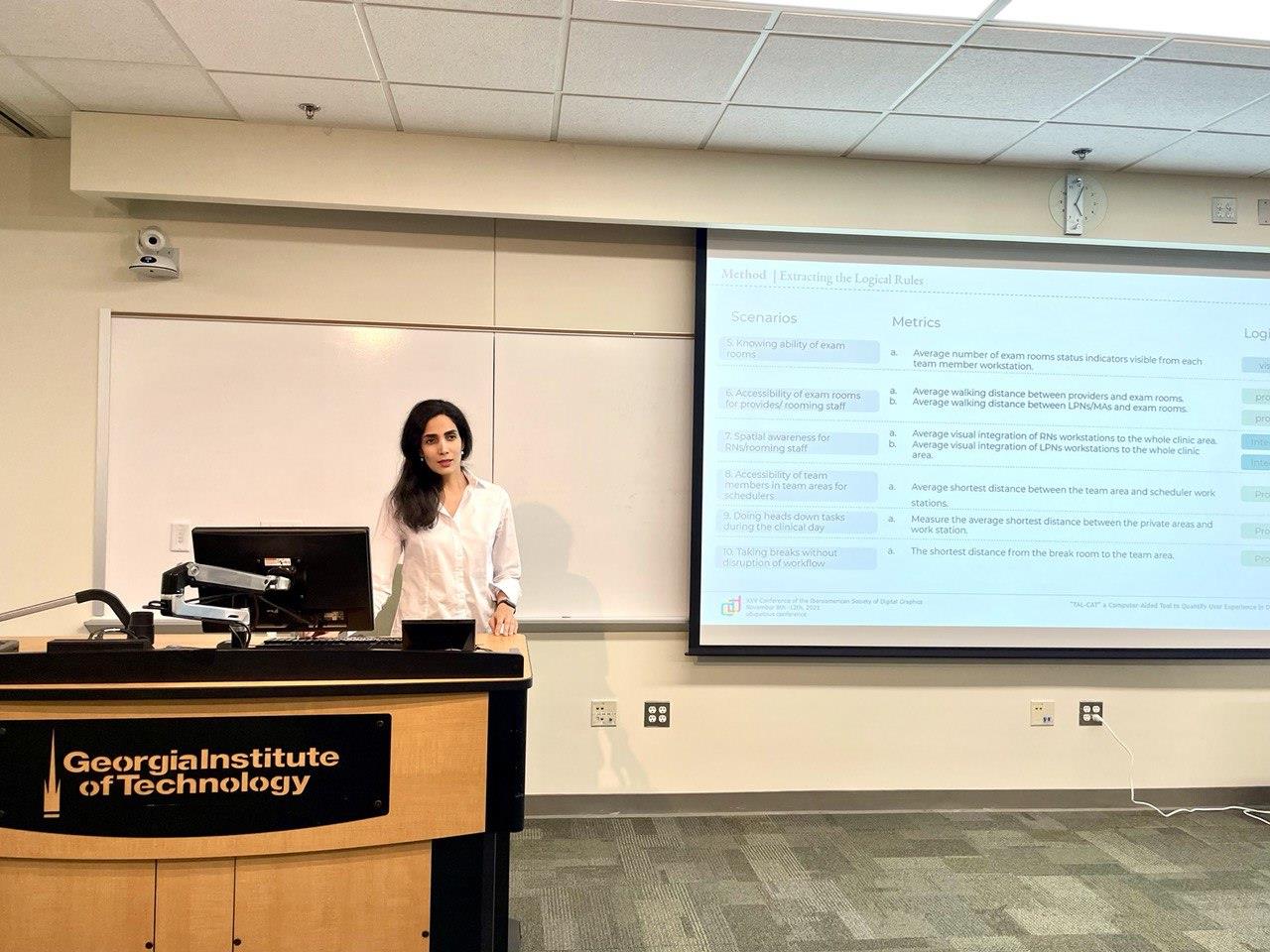
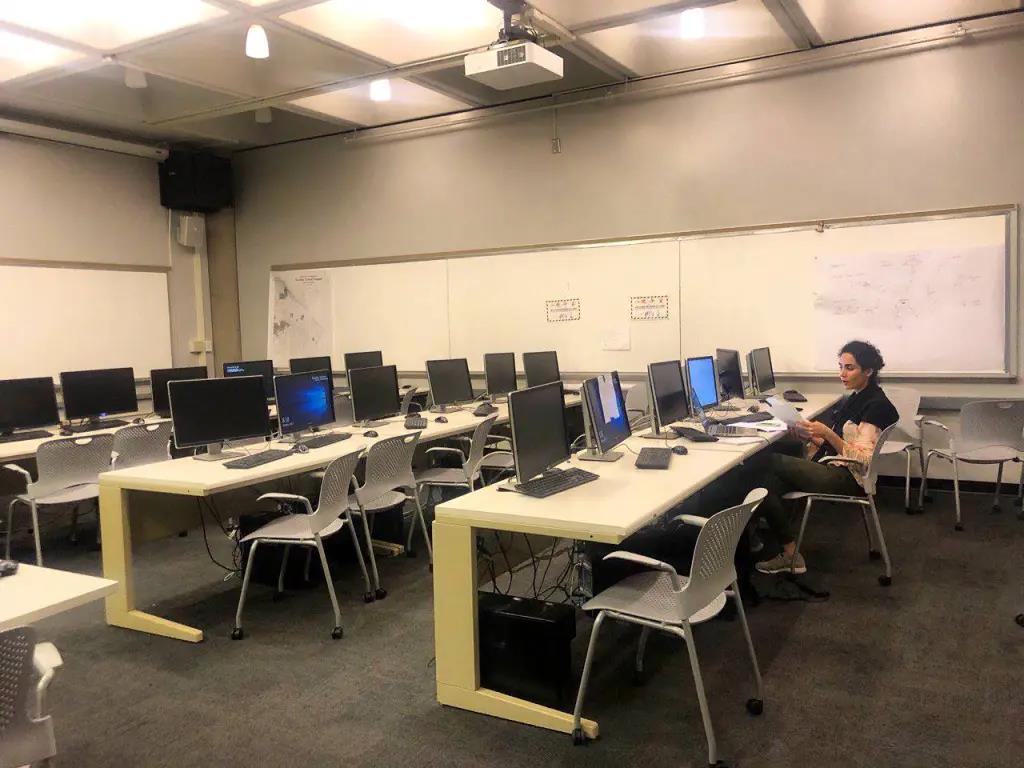
I continue this exploration at Virginia Tech to focus on how architects and designers can embed extended realities into the design process with the unwavering support of my advisor Dr. James Jones. The question of imagination and envisioning a project within its site is one aspect of my research now. While here at Virginia Tech, I collaborated on several studies, including lightweight biomaterial design and fabrication. We will present part of our teamwork at this year’s ACADIA conference at UPenn. I also contributed to haptics studies in a team at the Center for Human-Computer Interaction (CHCI).

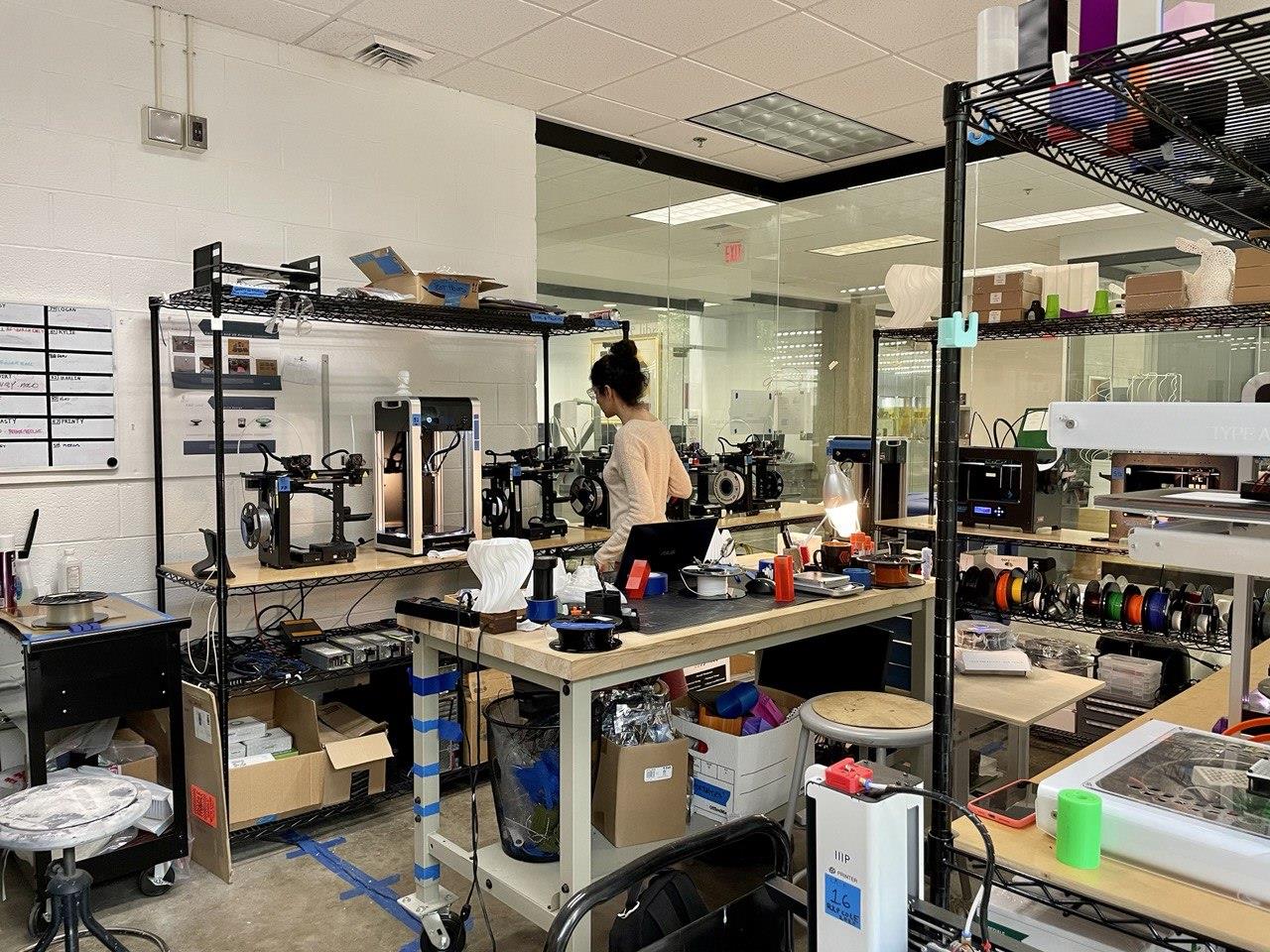
I have studied in three distinct educational settings on three different continents, from a design-focused school to a tech-oriented one. I believe that to be truly educated means to be in a position to inquire. As a first step, we need to learn how to formulate worthwhile questions and the path to follow them. Education needs us to build based on the resources available to us and to be able to look in the right places, ask the right questions, pose the right challenges, build conversations, and independently face the challenges that the world brings to each of us individually.
I have always chosen the path that required me to approach a problem in a novel and interesting way. Everytime anything appeared challenging, I reminded myself that the payoff would likely be worth the effort. I have realized the importance of maintaining an open mindset, acknowledging that there is always something new to pick up from other people and, acting like a sponge, taking in whatever is beneficial from my environment.
I’ve tried not to lose sight of my background and roots. When you decide to pursue an interdisciplinary path, your new peers may not share your values, making it easy to lose sight of your field. Learning to interact and collaborate with people from different backgrounds has been a major challenge; when someone says something that I believe is incorrect, I try to stay patient and reframe my argument until we can reach an agreement. By being patient and sharing your experiences, you can both learn from and teach your coworkers. Many people consider their colleagues and peers as competitors rather than whom they may gain insight. Our most valuable resources are our network and the people we work with. I always strive to look out for and appreciate my mentors, those who have taken the time to give me guidance, and those who work with me. I have personally and professionally experienced the impact of good people.
The major highlights of these years for me were moving to a new country, learning a new language, and forming an entirely new social network. While leaving my family behind was challenging, the upside was that I could reinvent myself, reevaluate what I wanted and start over.
Ph.D. studies teach you research and analysis, manage uncertainty, deal with failure, and create innovative thinking while being aware of the timeline of your process. Through leadership opportunities and experiences, I gained strong communication skills, enhanced resiliency, and teamwork.
I’m fascinated by how we imagine ideas and the process we take to communicate our imagination. I remain profoundly interested in the complexity of spatial understanding and how it shapes our perception of the environment. My research on creating immersive environments attempts to help architects contextualize their design ideas and eventually make more informed decisions. At the same time, literature and how we narrate stories have always informed my research. It’s amazing how words can take us to a deeper level of understanding, especially when a poet chooses each word like a pearl to weave together. Every architect is a storyteller who tries to create a story in a specific site, and technology can help in envisioning future possibilities. Both stories and architecture can humanize technology and create empathy on every scale.
I believe that my years of work experience and exposure to educational systems in the Middle East, Europe, and the United States allow me to evaluate, analyze, and potentially synthesize the various design education models I have encountered and share my findings with the community.
My personal, academic, and professional backgrounds have greatly shaped my understanding of the educational system and have prepared me to contribute effectively in any academic or professional setting. I plan to stay in academia while developing projects and ideas at the intersection of spatial design and technology. I hope to find a position where I can contribute the perspective I’ve gained through my years of education and experience.

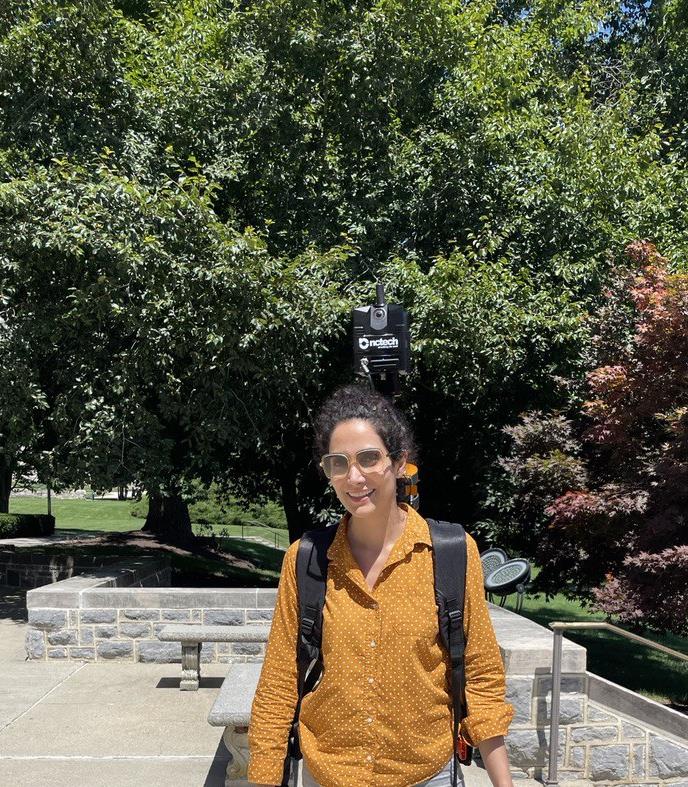
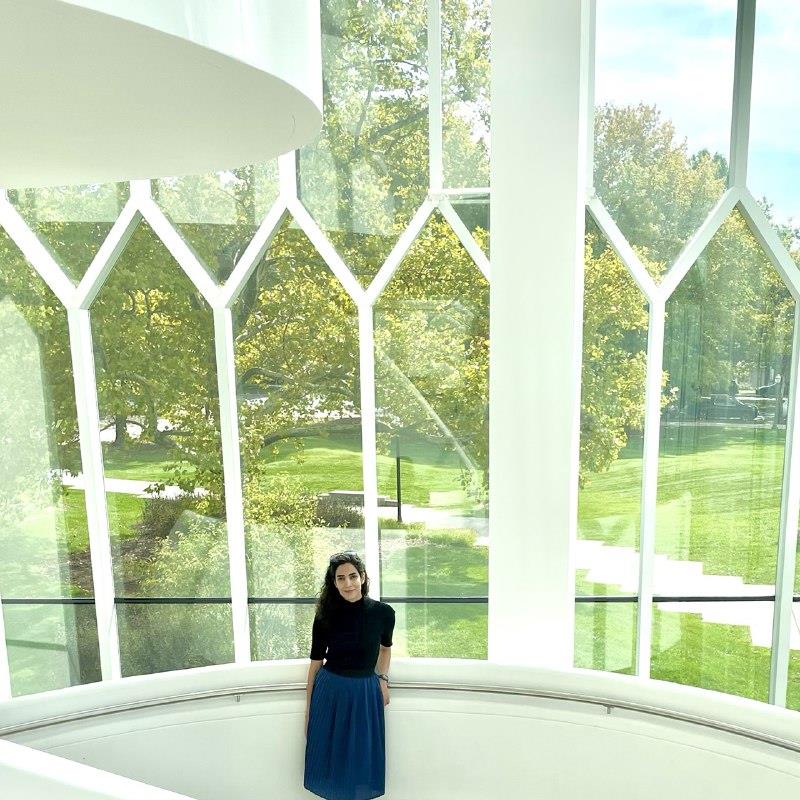
References
[1] Moussavi F. The Function of Form. Barcelona: ACTAR, Harvard Graduate School of Design, 2009.
[2] Moussavi F. The Function of Style. English edition. Actar, 2021.
[3] Venice Biennale 2012: Architecture and its Affects / Farshid Moussavi. ArchDaily, https://www.archdaily.com/269585/venice-biennale-2012-farshid-moussavi (2012, accessed 30 September 2022).
[4] Saghafi Moghaddam S, Cora F. STOP [in] transition – weaving a local fabric along the TOMI line. 2012. Epub ahead of print 24 April 2012. DOI: 10.13140/RG.2.2.32527.66726.
[5] Haghir S, Haghnazar R, Saghafi Moghaddam S, et al. BIM based decision-support tool for automating design to fabrication process of freeform lattice space structure. International Journal of Space Structures 2021; 36: 164–179.
[6] Rastegar RM, Moghaddam SS, Haghnazar R, et al. ‘TAL-CAT’ a Computer-Aided Tool Prototype to Quantify User Experience in Design Workflow: A Case Study of Teamwork Assessment in Primary Care Clinics. In: Blucher Design Proceedings. online: Editora Blucher, pp. 147–160.
[7] Rastegar RM, Saghafi Moghaddam S, Haghnazar R, et al. From evidence to assessment: Developing a scenario-based computational design algorithm to support informed decision-making in primary care clinic design workflow. International Journal of Architectural Computing 2022; 14780771221121032.
